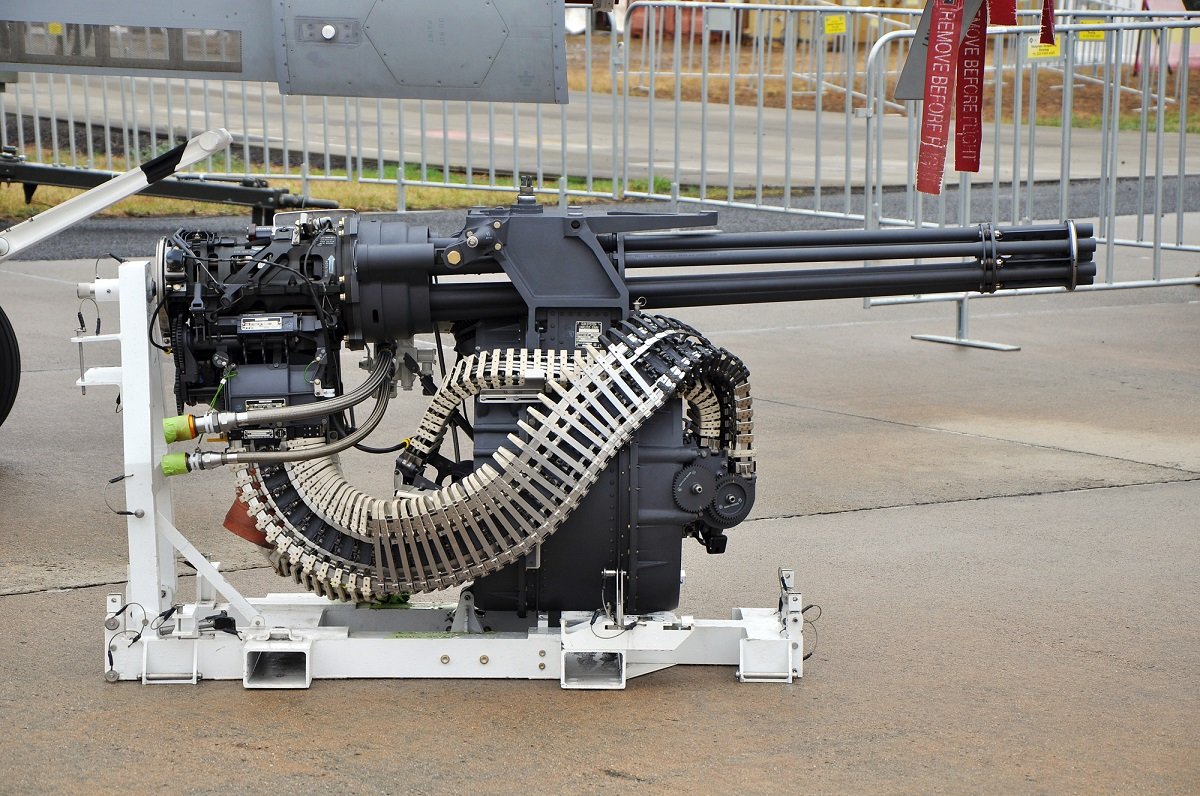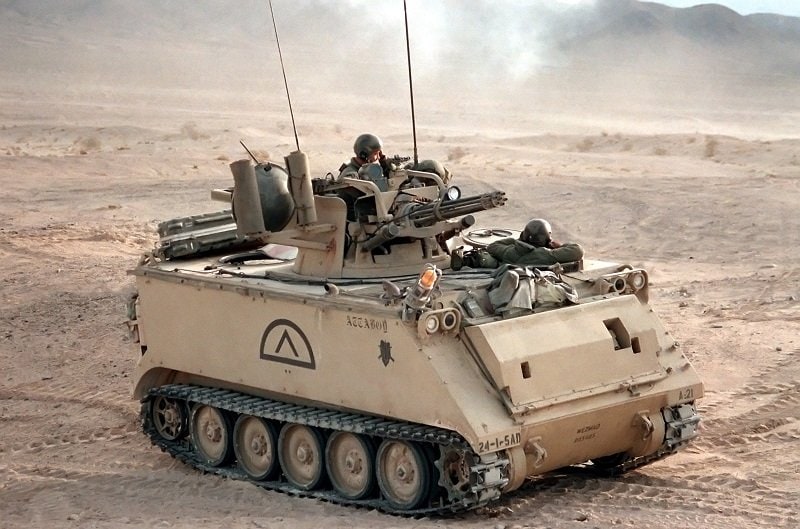Skip to comments.
The M61 Vulcan Can Fire 6,000 Round Per Minute
19FortyFive ^
| 1/19/2021
| Peter Suicu
Posted on 01/19/2021 7:47:27 AM PST by Onthebrink
Just before the outbreak of the American Civil War, inventor Richard Jordan Gatling designed the world’s first successful rapid-fire weapon. Technically not a “machine gun” in the modern sense, it was spring-loaded and hand-cranked. The forerunner to the weapons that were to come, the Gatling gun’s operation centered on a cyclic multi-barrel design that allowed for its rapid-fire, but also facilitated cooling of the barrels.
The Gatling gun did see some limited use in the Civil War but proved its worth during the Spanish-American War when it was employed to great success in the campaign in Cuba. Declared obsolete in 1911 after 45 years of service with the U.S. military, the concept of multi-barrels was explored again at the end of the Second World War.
(Excerpt) Read more at 19fortyfive.com ...
TOPICS: Government; History; Military/Veterans; Politics
KEYWORDS: blogpimp; getaneditor; guns; history; military; noob; onthebrink; petersuicu; usmilitary
Navigation: use the links below to view more comments.
first 1-20, 21-22 next last
To: Onthebrink
"(Excerpt) Read more at 19fortyfive.com ..."
Just curious why you excerpt posts from your blog? I don't see '19fortyfive.com' on the excerpt list.
2
posted on
01/19/2021 7:50:54 AM PST
by
cweese
(Hook 'em Horns!!!)
To: cweese
Is Humblegunner ill today?
3
posted on
01/19/2021 7:53:44 AM PST
by
Jonty30
(What Islam and secularism have in common is that they are both death cults. )
To: Jonty30
4
posted on
01/19/2021 7:54:33 AM PST
by
cweese
(Hook 'em Horns!!!)
To: cweese; Onthebrink
He’s a disgusting newbie piece of sh!t blogpimp. That’s why.
5
posted on
01/19/2021 7:55:09 AM PST
by
real saxophonist
(Yeah, well, you know that's just like, uh... your opinion, man.)
To: cweese
I was concerned, because you’re filling in for him.
6
posted on
01/19/2021 7:55:54 AM PST
by
Jonty30
(What Islam and secularism have in common is that they are both death cults. )
To: Jonty30
No I’m not filling in for anyone. I am asking a simple question.
7
posted on
01/19/2021 7:58:03 AM PST
by
cweese
(Hook 'em Horns!!!)
To: Onthebrink

Just before the outbreak of the American Civil War, inventor Richard Jordan Gatling designed the world’s first successful rapid-fire weapon. Technically not a “machine gun” in the modern sense, it was spring-loaded and hand-cranked. The forerunner to the weapons that were to come, the Gatling gun’s operation centered on a cyclic multi-barrel design that allowed for its rapid-fire, but also facilitated cooling of the barrels.
The Gatling gun did see some limited use in the Civil War but proved its worth during the Spanish-American War when it was employed to great success in the campaign in Cuba. Declared obsolete in 1911 after 45 years of service with the U.S. military, the concept of multi-barrels was explored again at the end of the Second World War.
A New Gatling Gun?
With the development of jet aircraft, engineers with the United States Army Air Force determined that a higher rate of fire would be necessary and determined that single-barrel “revolver cannons” would not be up to the task. Instead, designers at the Armament Division of General Electric considered the 19th-century concept of utilizing multi-barrels instead. Gatling had actually developed a prototype of his gun in the early 20th century that was fitted with an electric motor – replacing the hand crank – and it was able to reach a rate-of-fire of nearly 3,000 rounds per minute.

However, the U.S. military saw problems with the technology, and in truth, the concept was ahead of its time.
General Electric took up “Project Vulcan” in 1946 to develop the 20mm rotary cannon that could be capable of firing 7,200 rounds per minute. The use of multiple barrels minimized barrel erosion and heat generation, which prolonged the weapon’s life. In modern aircraft, the M61 was designed to be hydraulically driven and electrically primed. It was also developed to utilize a linkless ammunition feed system.
The Vulcan War Born
The Vulcan first saw use in April 1965 in Vietnam when it was employed on an F-105 Thunderchief, and has been used with the Air Force’s F-15, F-16, and F-22, and the Navy’s F-14 and F/A-18. It has also been fitted in side-firing installations on the Fairchild AC-11 as well as the Lockheed AC-130 gunships. The weapon can fire 6,000 RPM (or, rounds per minute)
General Dynamics, which acquired the Armament Division of General Electric, currently produces the M61A1 and M61A2 improved versions with the latter being 20 percent lighter and is meant for applications where weapon system weight reduction is critical.
Other variants of the Vulcan platform have also been deployed on AH-1G Cobra helicopters. In addition, to use in aircraft, the M61 Vulcan also serves as the basis for the U.S. Navy’s Mk 15 Phalanx close-in weapon system – the rapid-fire, computer-controlled, radar-guided gun that can be used against anti-ship missiles and other close-in threats on land and at sea.
8
posted on
01/19/2021 8:00:07 AM PST
by
Bratch
To: Bratch
Used to have a T-shirt depicting it with “GE! WE BRING GOOD THINGS TO LIFE” boldly displayed underneath. Got lots of questioning looks.
9
posted on
01/19/2021 8:05:07 AM PST
by
rktman
(Destroy America from the inside? Check! WTH? Screwed, blued and tatooed. Enlisted USN 1967.)
To: Onthebrink
To: Bratch
11
posted on
01/19/2021 8:16:27 AM PST
by
bk1000
(Banned from Breitbart)
To: Onthebrink
Go broke in 5 seconds burning all that ammo.
12
posted on
01/19/2021 8:18:36 AM PST
by
lurk
( )
To: lurk
Phalanx system tracks its own stream of ammo in flight via high frequency RADAR and adjusts the direction in which it is pointing as necessary to connect said stream with the flight path of the incoming missile thus obliterating it before impact.
Worth the cost in ammo.
To: lurk
Interesting way to publicize your net worth (/sarc)
6000 rds x 5 sec = 30K rounds, looked it up and the Tungsten Penetrator (TP) ammo is $100/round. I am sure the Depleted Uranium Ammo is more. Anywho ... at $100/round that would put your net worth at about $3 million.
14
posted on
01/19/2021 8:32:21 AM PST
by
RainMan
(Democrats ... making war against America since April 12, 1861)
To: one guy in new jersey
Projectiles made from depleted uranium to maximize weight (and thus kinetic destructive force) per unit volume do bump up costs however. Once again however, when necessary to be used, it is by definition the last line of defense, so the costs remain worth it.
And the sound. The sound. BRRRRRRRRRPPPPPPPP!
To: rktman
I crewed on these guns (M167) in Germany back in the 80's. The amount of steel you can send downrange or into the air is amazing. The biggest downsides to that duty was:
1. Cleaning: Think cleaning a M2 or M60 sucks? This is on a whole new level.
2. Loading: 90-95lb ammo cans and hand-loading the container is a serious workout if you do it at 'combat speed'.
3. Location: Being in a Vulcan crew, you were going to be placed in a freezing, windswept, highly exposed position so as to have a clear 360 degree field of fire.
4. Camo nets: 'Nuff said.
To: Bratch
I want one but only if it came with 250K rounds of ammo......
Don’t want to pay to feed that beast.....
17
posted on
01/19/2021 8:45:32 AM PST
by
nevergore
(I have a terrible rash on my covfefe....)
To: Onthebrink
“The M61 Vulcan Can Fire 6,000 Round Per Minute”
Okay, I’ll buy one!
18
posted on
01/19/2021 8:54:33 AM PST
by
MercyFlush
(Donald Trump is my President and Free Republic is my social media!)
To: Bratch
Shut up and take my money!! Woo-Hoo!
19
posted on
01/19/2021 9:00:26 AM PST
by
gimme1ibertee
(Yeah, let's GO THERE. I'm ready...)
To: Bratch
When we’d engage an aircraft-towed drone, CIWS would destroy the drone and start moving up the tow cable.
Navigation: use the links below to view more comments.
first 1-20, 21-22 next last
Disclaimer:
Opinions posted on Free Republic are those of the individual
posters and do not necessarily represent the opinion of Free Republic or its
management. All materials posted herein are protected by copyright law and the
exemption for fair use of copyrighted works.
FreeRepublic.com is powered by software copyright 2000-2008 John Robinson

